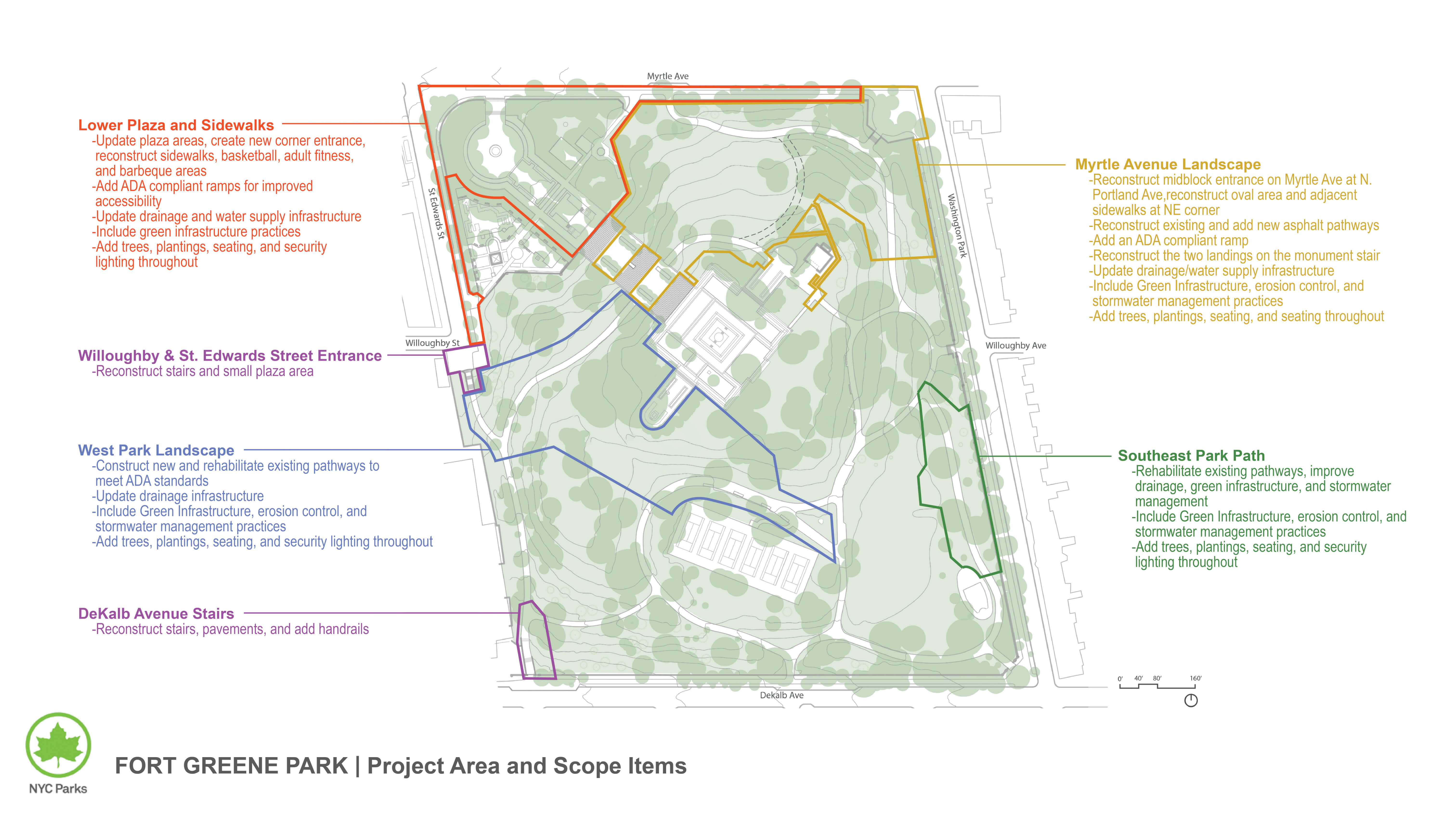City greenspace gurus relaunched a large-scale overhaul of Fort Greene Park Friday, more than a year after a previous plan for the lawn stalled in court.
The new $24 million scheme is a combination of two previous proposals and covers almost every corner of the 19th-century lawn with a focus on making it more accessible, improving drainage, and revamping swaths of its Myrtle Avenue side.
“We are committed to reimagining and restoring Fort Greene Park, and we’ve made sure that accessibility is at the forefront of the work we are doing,” said Parks Commissioner Mitchell Silver in a statement April 9. “The expanded scope of this project will undergo review by an environmental engineer, and we are confident that we will be able to move forward with our plans for this park. Fort Greene Park is the focal point of this neighborhood and the community deserves an accessible, inclusive, and renewed space where they can feel safe and welcomed.”
The pricey project falls under Mayor Bill de Blasio’s Parks Without Borders initiative to open up municipal meadows and includes redesigned entrances and plaza spaces, updated drainage infrastructure to prevent erosion, better pathways in accordance with the Americans with Disabilities Act, new trees, and added lighting.

This marks is the second attempt by the city agency to spruce up Fort Greene Park’s Myrtle Avenue-facing half, which is more heavily used by adjacent public housing residents than the Dekalb Avenue portion next to well-heeled brownstone parts of the neighborhood.
The agency’s previous $10.5 million effort for that section from 2017, which controversially included the chopping of 83 trees, was held up in court until early 2020 after locals sued, arguing the plans needed a more thorough environmental review.
This time, the plans will go through an Environmental Assessment Statement in accordance with the city’s Environmental Quality Review regulations, according to Parks.

The same group of locals under the banner Friends of Fort Greene Park previously sued the city in 2017, revealing officials had lied about the health of many of the trees that faced the chopping block.
The head of the space’s conservancy, who supported the city’s proposal, claimed that some of the trees had to be felled because the shade from their dense canopies prevent other plants from taking root, and that they would be replaced by so-called “understory gardens,” consisting of younger trees, shrubs, and ferns that help curb erosion and provide a better habitat for Brooklyn’s birds and bugs.
The original plans also included flattening the grassy mounds at the corner of Myrtle Avenue and St. Edwards Street to make way for a grand paved plaza and a redesign of the entrance at far side of the avenue at Washington Park.

Several of the old proposals made it into the updated scope of work, including new basketball, adult fitness, and barbecue areas at that northwestern corner, along with improved wheelchair access and a new sidewalks.
The agency will reconstruct the two landings on the steps leading to the Prison Ship Martyrs’ Monument, which towers over the park designed by landscape architects Frederick Law Olmsted and Calvert Vaux of Prospect Park fame.
The plans also call for a reconstructed entrance at Willoughby and St. Edwards streets, rebuilding the stairs at the southwest corner along Dekalb Avenue, and improving the path at the southeast flank between Dekalb and Willoughby avenues.
It is unclear whether the new proposal also includes a mass-axing of trees — the plan only notes adding greenery — but items on the agenda for the Myrtle Avenue side this time around include vague phrases like “green infrastructure practices.”
Officials have started designing the overhaul, which they say will take about a year, but it is unclear when the park will partially close for construction.
A Parks Department spokeswoman did not immediately return a request for further information.























